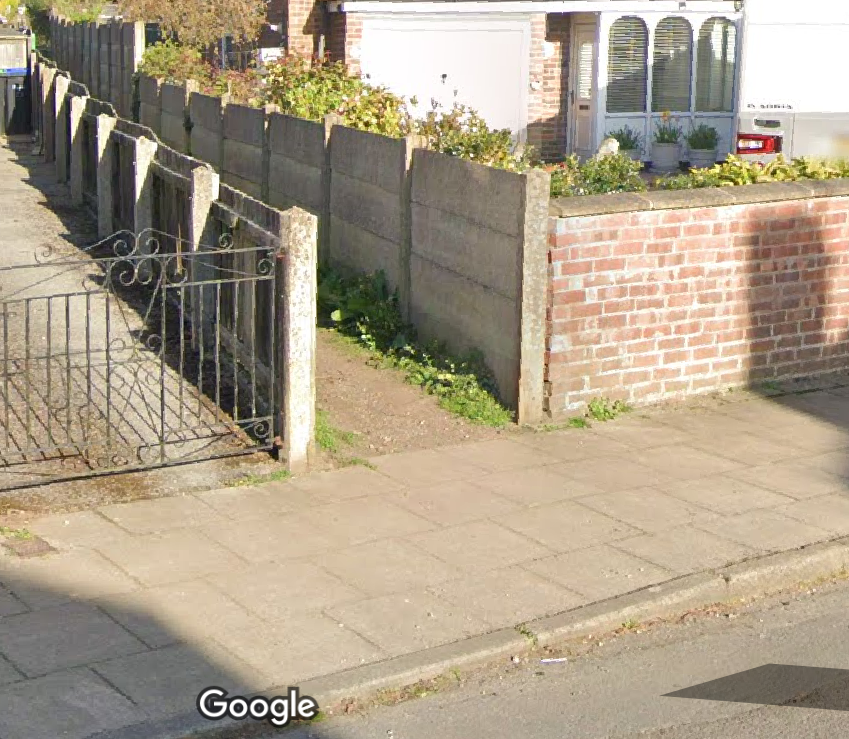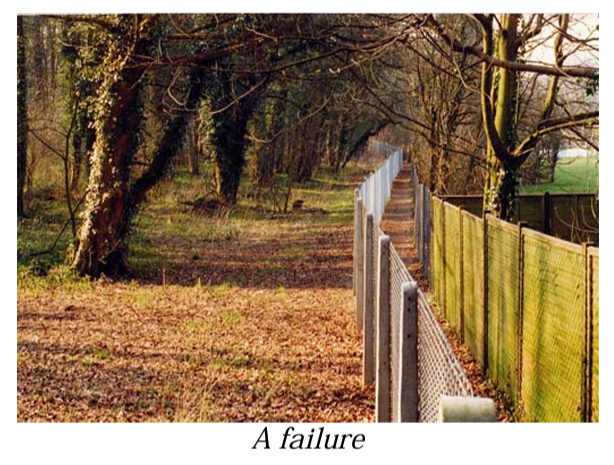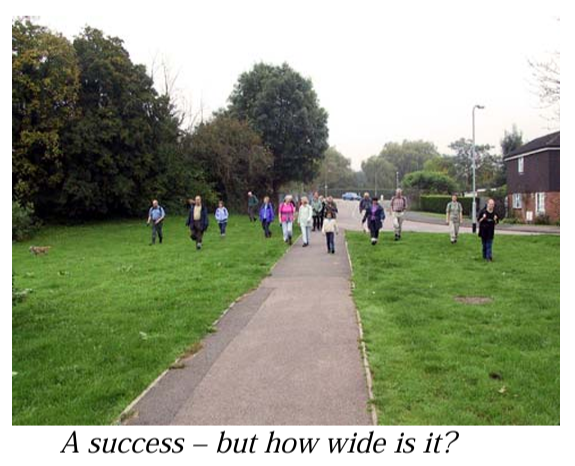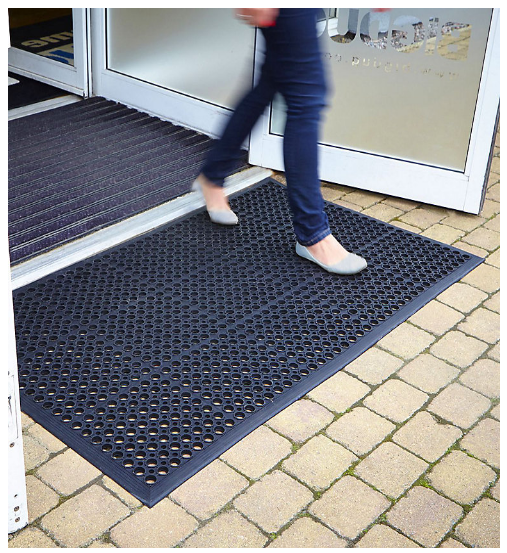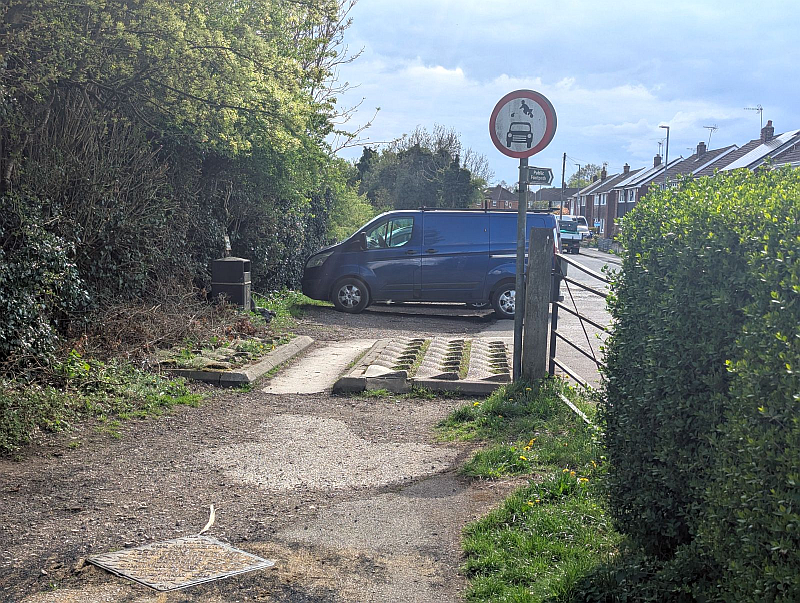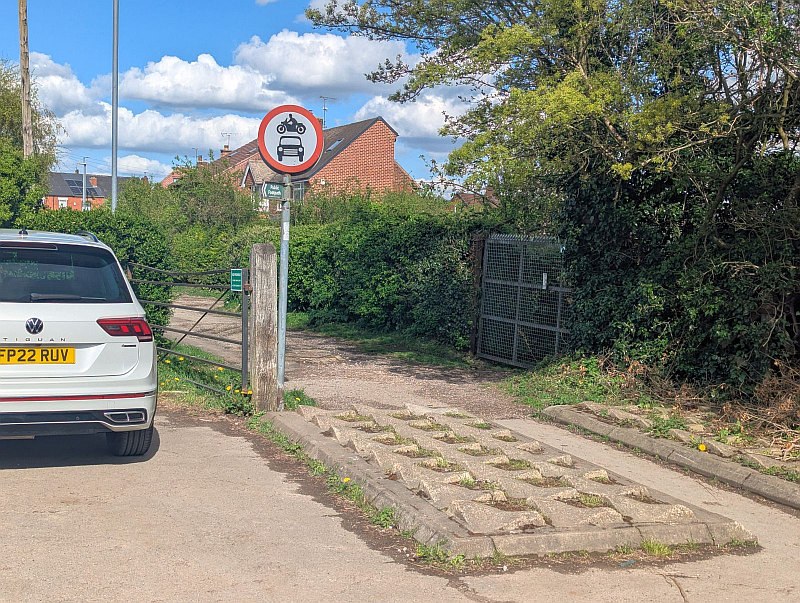-
Posts
12169 -
Joined
-
Last visited
-
Days Won
41
Everything posted by Ferdinand
-
Just on this point, get 2 or 3 of these cheap £10 min/max things to measure temperature and humidity. They cost little, and can be used anywhere. I use one to keep an eye on the drying of my washing for example, which I do in the shower cubicle with a dehumidifier in winter. The only thing is do not put them where they may fall on the floor; they do not bounce very well. There are lots of different sorts. This is an example not a recommendation. I buy several then gradually break them over 4 or 5 years. https://www.amazon.co.uk/HOTUT-Thermometer-Hygrometer-Temperature-Humidity/dp/B0DS25WWL8/
-
"The German company that makes the mechanical ladder used in the Louvre heist has used the image to advertise, with the text 'When you need to move fast' "
-

Eco 4 Programme Off the Rails - How?
Ferdinand posted a topic in General Self Build & DIY Discussion
There are reported problems and an audit with the ECO4 programme, which is tragic as these ECO programmes have (imo) been highly successful for more than a decade. It seems to be around lack of sufficient supervision / audit, which left room for con-artists and fly-boys to move in. I'd also mention at a move to more complex products ie external wall insulation not internal wall insulation. I've been fed ads all over Youtube for this, as for solar panels, marketed as "you can get free Government money". It's worth a read for general awareness. From a BBC Report this morning: https://www.bbc.co.uk/news/articles/c3w965gz8zgo From the National Audit Office: https://www.nao.org.uk/reports/energy-efficiency-installations-under-the-energy-company-obligation/ -
Good morning everyone. @ToughButterCup for architecture it's "God is in the details" - that was your compatriot Ludwig Mies van der Rohe. This was perhaps after he ahd the details everso slightly wrong in the previous 20 projects in ways that no one else noticed, but drove him to distraction. On the giant compost heap, I think it's a little low in energy density. I think this was one where one of those mad-scientist hippy types did some experiments in the 1990s with ginormous compost heaps like long barrows. What would the emissions per kWh of heat be? For me, it's in the same niche now as things like interseasonal heat storage and domestic wind turbines. Potentially of inerest in niche settings comprising about one house in 5,000 to one house in 100,000. My recommended domestic alternative would be to have a sealed, insulated basement, a long-drop loo, and to eat lots of curry.
-

Credit/Debit Reward Cards, Discounts etc
Ferdinand replied to Ferdinand's topic in General Self Build & DIY Discussion
Indeedy-doody. My suggestion is that principles likely still hold, but at any time a tactical reassessment is helpful as teh marketplace chnages constantly at a slow rate and significantly over several years.- 151 replies
-
- credit cards
- rewards cards
- (and 6 more)
-

Fill your roof with in-roof PV panels instead of pantiles?
Ferdinand replied to Alan Ambrose's topic in Photovoltaics (PV)
You perhaps also need to apply the revenue from export - I get 15.5p from Octopus. Plus there is the possibility of EV charging. My house is built to ~2010 building regs, and with 2015 FITs and Octopus (35 panels on EW orientation) I now break even, with no House Battery or EV. Ferdinand -
This is an interesting one - (self-described) petrolhead Youtuber Mark McGann put out a video about how he repeatedly extended his house in several ways unilaterally changing or not applying for planning permission, and how he got knocked back by an enforcement notice on a number of items. There's quite a lot of outright nonsense in it, but it is an interesting video. Including creating his own "crazy race track" in the green belt. (Mark's words) Video: Appeal Report against enforcement notice: https://www.stratford.gov.uk/doc/174891/name/Clarkes Green Farm Appeal Decision.pdf (I think he's trying to create a victim narrative, having tried to drive a double decker bus through the law and been caught. There are some "interesting" bits down in the details. Imo he's reckless in his attitude - for example engineering work on an ancient moat landscape feature.) This one perhaps needs to be kept quite tight in the comments, please.
-
It's called an Electroniq Airflex 15 . I did a thread back in 2022 when I was learning and choosing, and progress reports. https://forum.buildhub.org.uk/topic/28048-use-of-portable-air-conditioners-heat-pumps/
-

Planning Permission, Heights of Fences, and Public Rights of Way
Ferdinand replied to Ferdinand's topic in Boffin's Corner
Wot no barrels of burning tar ? -

Planning Permission, Heights of Fences, and Public Rights of Way
Ferdinand replied to Ferdinand's topic in Boffin's Corner
That's a bundle of useful questions 🙂. (Aside: Does the concept of Public Footpath exist in Scotland? And if there is something analogous has it been affected by the Land Reform (Scotland) Act 2003 which created the Right to Roam?) In EW, there is no universal rule for minimum width, but there may be binding notes on the Statement part of the "Definitive Map and Statement", which is the authoritative definition and maintained by law. These definitive maps exist everywhere in EW except in Inner London Boroughs - excluded from the defining legislation in 1949 (God knows why - probably Lord Bufton-Tufton intervened). The paper I linked (worth a read) also notes that there may be policies by Local Highways Authorities which may distinguish between 'path surface width', and 'path surroundings width', and that sometimes an inspector making a decision may mention a path surface width which the landowner latches onto because it lets them make it smaller and keep the public away by making them endure a miserable experience: Leicester County used to have, and may still have, a 1.8 metre (6 foot) path policy but they actually had the firm surface width in mind and normally required another three metres of grass on either side. So the effective recommended path width is 7.8 metres, nearly 25 feet. If their 1.8 metres were made the legal width then, as with any path, it could be fenced in by the owners of the underlying land with two metre high security fences to that width without any permission being needed. This would be quite horrid so when considering widths of paths the overall width not the hardened width should always be thought of. And fencing-in should be imagined. https://www.oss.org.uk/wp-content/uploads/2019/04/Getting-decent-widths-in-path-diversion-orders.pdf I prefer not to have a universal definition because organisation such as the NFU and the Country Landowners Association might start telling their members to fence pathways in PDQ to that minimum. A measure of ambiguity is more beneficial. As a distant analogy of the tendency to "Working to the utter legal minimum we can get away with, and sod the consequences or the other people" consider bus companies and wheelchair spaces. Around 2021 research came out for the Government which showed that the current "reference wheelchair", defined in the 1990s, is smaller than around 20-25% of wheelchairs in use around 2020. Bus companies work to the absolute minimum wheelchair space size they can get away with - which is based on the reference wheelchair, and will do nothing for accessibility. With the steely resolution we are used to from our last several Governments, the Govt sat resolutely on their bottom, and failed to review the size of the reference wheelchair before launching a headlong rush to have electric buses everywhere. So the continued exclusion of a big chunk of wheelchair users from buses which will kneel and deploy ramps has been hard-wired in for another 25 years. I'm not sure that the purpose of the failure footpath is *that* relevant, however in 2025imo footpaths should be for far more than just to pass and repass. I think there is case law to that effect (would need to look it up), and imo a footpath against the countryside should be for viewing and birdwatching and enhancing physical and mental health and many other things. I'd make the same argument in towns, where exercise space etc near to homes is even more important. The most interesting argument for urban areas I think is that public footpaths should also be linear nature corridors linking the whole area. We have a network; let's use it - so make it at least 3m width for the path, and 3-5m either side. Done like this, fences matter less as there is space for a row of nature-rich bushes to hide them. These are a couple of excellent public footpaths on the estate close to where I live. This is 1990s and they respected the existing network, which has created a beautiful environment for walking/wheeling and cycling separated from the road network. Except, of course, that some bugger has put anti-access barriers all over it, which need to go which in the spirit of Krikkit "have to go", and it falls off the edges of the world where the estate stops. (There's some off topic there, but it's an area I am trying to think through.) -

Planning Permission, Heights of Fences, and Public Rights of Way
Ferdinand replied to Ferdinand's topic in Boffin's Corner
That's partly a difference between rural and urban. I think that those flowerpots are probably obstructions that could be required to be removed if it is a Public Footpath, unless the "stoned" area is in the boundary marked on the deeds, and there are no supervening rights held by a public body (eg Local Highways Authority). This is one near me that is around 90cm between 2 houses. It is a Public Footpath I think it has been like that since the early 1970s when I lived in the area and the house on one side is 1930s. It has a horrible anti-wheelchair barrier on it at the other end, but that one is not a priority as the path is essentially unusable for mobility aids. https://maps.app.goo.gl/qJZQShbbtemaLh2Q7 -

Planning Permission, Heights of Fences, and Public Rights of Way
Ferdinand replied to Ferdinand's topic in Boffin's Corner
That's interesting - although the highway there is a road, and the neighbours on that road were understandably annoyed. In that case I'd say they just did not do their homework and walked into a lamp post of ignorance. They did not even know that a fence over 1m adjacent to a road requires planning permission - which is one of the absolute basics. They also trusted what Wimpy told them, without a 3rd party check. I think the Duty Planner or the free Planning Aid service from the Town Planners would have answered that with one email. It's not clear where responsibility lay for verge maintenance - if they are leasehold then there should be comeback. Otherwise they should have gone for the LHA on maintenance of the overgrown footpath itself - assuming it is adopted. IMO it's more likely they tried to pull a fast one for their own gain, and are cross that they got caught. These are £500k-700k houses. For what they have done, they need PP for both the toytown fence, and the change of use from (I assume) amenity land to private garden. As it is they may have a civil case against Wimpy, but 10 householders there are well able to absorb £60k between them, so I'd recommend moving the fences back and gifting the land to the Council - they are in the article complaining about "what happens if somebody breaks their leg on my land if I remove my unlawful fence" . -
A question which may get nerdy so I have put it here. It is common for a garden adjoining a road (ie a public highway) to have a minimum public fence height of 1m, unless planning permission exists for a higher fence - or eg a hedge is used. What is the position with respect to a Public Footpath, a Bridleway etc, which are also public highways in law? And what is the position in civil law wrt fence heights next to RoWs such as public footpaths? (There are wrinkles around the edge of this, such as new paths created on estates or otherwise by Councils not being initially dedicated as RoWs, and so being permissive paths of various types, but I'm interested in anything that anyone knows or thinks.) The piccie below is an example of a "squeeze" between housing and countryside. The underlying issue here imo is the rural landowner being an antisocial twunt - the width of these are not often specified, and he has taken for himself everything he thinks he can get away with, turning the experience of the public into a miserable one. This is the "success" to which it is compared. This is the source doc from the Open Spaces Society, the people who deal with Village Greens and Common Land, and PRoWs, which started my train of thought: https://www.oss.org.uk/wp-content/uploads/2019/04/Getting-decent-widths-in-path-diversion-orders.pdf Thanks Ferdinand
-
Yes. It's from wiki here: I agree with all of that. My point on the Govt would be that we have a very unstable environment, where there are a lot of potential black swans, so they need to be seen to deliver on those high profile commitments that they have made. Which include for two, reductions in NHS waiting lists, and £300 off energy bills (though I'm not clear whether that was in cash or real terms). I'd say that delivering on maybe 4 out of their main 5 targets is the starting point for getting a second term. But also, the antidote to the current grumpiness and tendency towards extrems especially on the right (cf eg the rhetoric of RObert Jenrick and Chris Philp), is the restoration of a society that works and benefits its members after 15+ years of eg Local Government being gutted financially. Regional pricing would play into that - for example for investment by energy intensive industries in northern regions, Scotland and Wales. On driving renewables, we also have the argument of self-sufficieny - that has changed my own view on onshore wind, for example.
-
Yes - it's from here on Wiki, and that is noted. https://en.wikipedia.org/wiki/Levelized_cost_of_electricity#:~:text=The levelized cost of electricity,levelized cost of thermal energy. But @SteamyTea's point that the generation cost drivers may be nuclear and gas may be valid. However two points: 1 - The UK will be having a chunk of our standby / baseload power as SMR Reactors (small modular reactors) where Rolls Royce is a leader, and where we do not know the cost equation yet. 2 - The Sky piece is making a big balloon out of a small story. The actual change is so small (~1% of an annual bill - £22), that they had to leave it out of the subheadline to make the story less small. And that is all they are getting in a FIVE YEAR period: A major component within household energy bills is set to rise sharply from next year to help pay for efforts to maintain energy security during the transition to green power. The industry regulator Ofgem's draft determination on how much it will allow network operators to charge energy suppliers from 1 April 2026 to 31 March 2031 would push up network costs within household bills by £24 a year. These charges currently account for 22% of the total bill. I'd call this a non-story on a media puff wagon to try and scare people. On renewables, the report from the Climate Change Committee 2 weeks ago confirmed that UK emissions are now down more than half since 1990 in consumption based numbers. Politically, I'd say the Govt is preparing to decouple the gas-linked striking price to go regional, which will encourage investment. They also promised energy bills down by £300 by the next Election, and they need to meet that. Nor am I convinced by the "political opponents" of Net Zero RefUK and Conservatives. RefUK are a wind sock not a sign post, and went into quite recent elections with a commitment to non-Zero (eg Welsh Elections 2021), and they have already lost about 28 wheels from their organisational clown car; they just lost their 2nd MP *. Farage will turn his coat like the Vicar of Bray when the wind changes direction. The Cons are still up a creak with no paddle, and no map of an escape route, and their leader is a performing seal trying to make populist noises to out-Reform, Reform - that won't work. I think Starmer can hold this line. Ferdinand * - There's an amusing but very enthusiastic Youtube channel called Political Custard which covers this subject.
-
A useful thread. I have 3 comments. 1 - For the benefit of future readers (apologies to OP formentioning) these are things that should really be considered before you get to planning permission stage. If it is something that has to be considered later then you end up spending more architect time, more planning consultant time and more planning fees for a second run round the block. 2 - For passive mitigations, I am a huge fan of pergolas of many sorts, including solar roofed. But consider access to upstairs walls and windows for cleaning / maintenance, whether you are going for a strong roof that can be walked on maybe with boards, a light roof so anybody will fall through it to make sure it *can't* be walked on. or indeed a balcony outside your bedrooms. For the latter remember all those Deep Southern houses / cowboy towns in the American Dream, with all round parapets and balconies to keep the sun away. And consider security wrt nimble scrotes or cat burglars (or cats) breaking in upstairs. 3 - As to active solutions, what about A2A heat pumps and solar? I will need to upgrade my gas fired underfloor central heating at some time in the next decade and A2A are the plan, despite having ufh downstairs and enlarged rads upstairs already in place. My ufh is not ideal (only 90mm of PIR insulation below the slab), and I have been running with a portable A2A heat pump unit on trial for a couple of years and my gas bills have plummeted.
-

Block paving staining help, not coming off
Ferdinand replied to wakewaterblue's topic in Bricklaying, Blockwork & Mortar
On your original query, I think I might be inclined to accept it as what happens with different weather exposure near the coast. Do you know it won't just happen again with the next lot of blocks? I think I would possibly just leave it, and install a large entrance mat * or textured covering over the entire recessed area. It's a place to make sure no mud etc gets in, a place for outdooor pot plants etc, and can just be hosed down if necessary. I'd go for a domestic-looking commercial grade one and cut it to size. Were I redoing blocks, rather than go for pristine in a situation which might be naturally impossible to keep pristine, I might go for a contrast for the recess and eg make the whole thing dark blue (which imo should have been part of the design as they should understand how it will wear). So the block design and colour layout becomes more immune to the effect you have now seen. But then I'm the bloke who does not buy white cars because I don't want to have to wash the damn thing every month. * This sort of thing - an example not a recommendation. / -

Block paving staining help, not coming off
Ferdinand replied to wakewaterblue's topic in Bricklaying, Blockwork & Mortar
@wakewaterblue, On your "sand blown through under the patio window last point": My suggestion for the outside gap would be waterproof mortar - that is a specialised product, or use an additive. There may be merit in clearing out what is there already to get a thicker new section rather than just patching - the gap looks narrow. At a trivial level, that could be mix in a good amount of PVA (I have used this eg in small added slabs filling in old chimneys breasts), or something more specialised. Make sure that the surface slope leads moisture away from the house, but you know that I'm sure. To tidy it up you could colour the mortar if you clear it all out, or use a plastic L section over the top, which can be obtained coloured. That should give you imo a 10-25 year repair, done carefully. -

Is a shataf (hand shower) accessible?
Ferdinand replied to Ferdinand's topic in Bathrooms, Ensuites & Wetrooms
Thanks. That helps. -
I've seen the other thread on shatafs and Japanese electric superloos, and I'm wondering if anyone has experience with one or the other installed in a house where there is a wheelchair user particularly - but also any other disability? These are in most of Asia, so this happens. But does anyone have experience - I was reminded of a friend with cerebral palsy, who has less eg reduced control over hand movement? Ferdinand
-

Replacement dwelling into existing (combined) sewer connection
Ferdinand replied to Woodview's topic in Waste & Sewerage
Are there Planning Questions. I can see this issue being a Condition in some way, and being used as quiet leverage by a Council in some circumstances. -

Spain/Portugal blackout
Ferdinand replied to Beelbeebub's topic in General Alternative Energy Issues
There are big flywheels, like this. It's a good thread. I am not sure on the overall picture, though. The Telegraph now being a lobotomised honorary tabloid * which mixes opinion in with invective, and largely ignores the concept known as "news", it's no wonder they jumped on the bandwagon. * I'll never forgive them their front page last year about killer cyclists doing 50mph in thousands of places all over London, using falsified data. The record short course time trial in the Tour de France is 35mph. -

Locking Bollards - Recommendations?
Ferdinand replied to Ferdinand's topic in General Self Build & DIY Discussion
Bump. -
I am looking at replacing a farm gate with two locking, fold down bollards to provide easy access for mobility aids. Can anyone recommend decent quality items? What will they cost me? The application is that I am trying to make a local public footpath accessible to mobility aids - I can use the Highways Act 1980 to make the Local Highways Authority remove an obstruction, but it will take time and they may fight to keep their illegal barrier. But one other option is to persuade the local allotments society to replace a gate I think they own with locking bollards, which would be better for them and keep them onside. I would happily pay for a couple of these locking bollards, as it may cost me to persuade the council. Photo below. The motor vehicle modal filter is also an anti-wheelchair barrier, and is made out of concrete lorry-blocks from a roundabout. It has been there since 1978 or so. The channel through is about 75cm wide. The policy requirement is for a route through to be 1.5m wide and flat. The allotment people (big site of 200 allotments on the same side as the litter bin) go through the channel with planks across wheelbarrows etc, so are not keen on bollards across the main Right of Way. Thanks Ferdinand
-
A clip that came my way with Judith Hann. predicting in 1989 what the house of 2020 would be like. They are correct on passive (Passive Haus was being coined at the time - first one built in 1990), energy reduction to reduce fossil fuels (we have not far off halved emissions in the UK), LCD windows, intelligent house and other things. They have a piece of aerogel. They overdo embedded technology always simplifying things, and are wrong on decor, and that Electicity Sockets would go away. But there is no visible cat in the 2020 house, so no passive cat flaps. https://www.bbc.co.uk/videos/cnk55nnnyxpo And the presenter is one Christine McNulty, who was I think visiting a conference at the Windows on the World Restaurant in the World Trade Centre on September 11th 2001. https://www.londonremembers.com/subjects/christine-mcnulty






